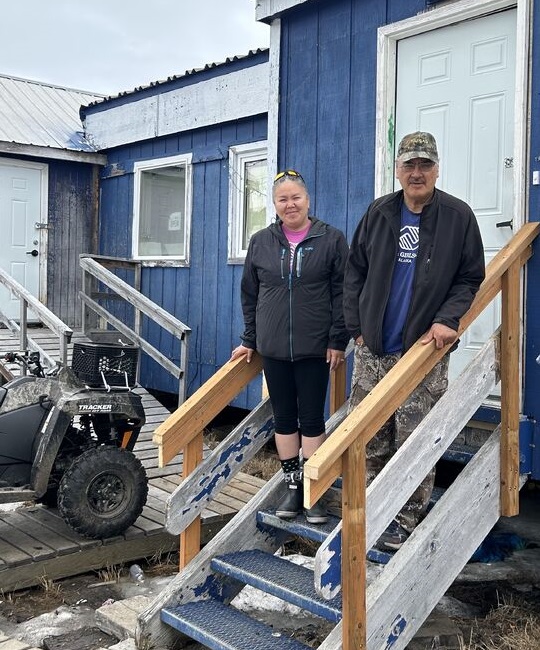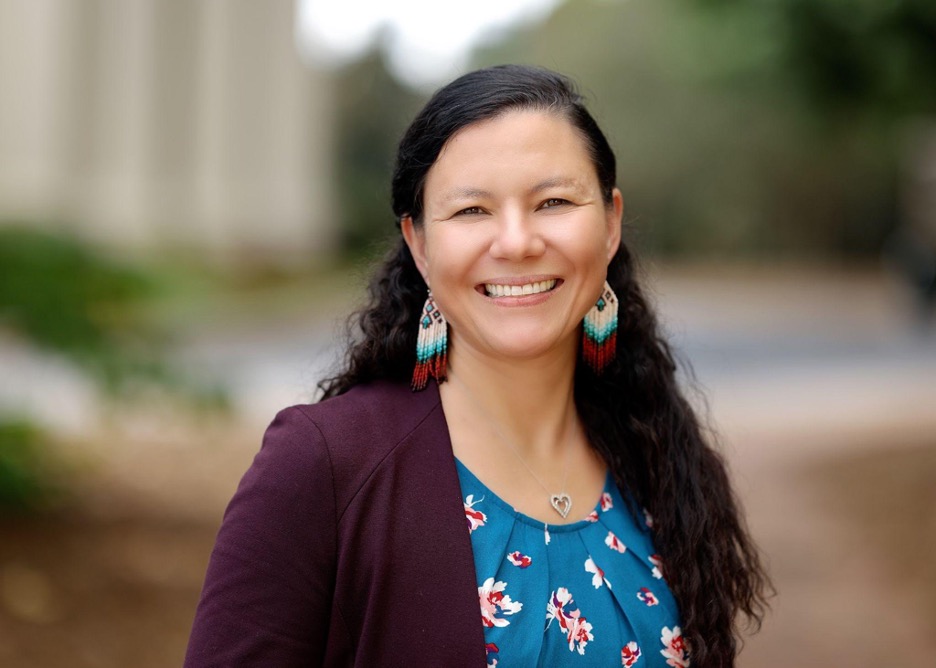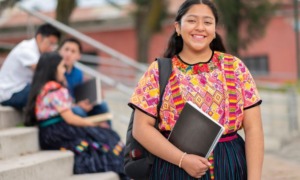In Selawik, Alaska — population under 800 — no roads exist on the Arctic marsh, so residents travel by snowmobiles or ATVs or walk on boardwalks connecting houses and buildings. The village is a Iñupiat Eskimo community where generations have survived off the land, eating plants they forage and animals they catch.
The Boys & Girls Club plays an important role in the summer in an isolated community like this four miles north of the Arctic Circle.
Boys & Girls Clubs – Alaska operates 23 clubs serving 5,000 children and teens statewide. The majority, like Selawik’s, are in remote locations.
Boys & Girls Clubs – Alaska CEO Jen Patronas, an Alabama native who fell in love with her adopted state of Alaska after her 20-year career in the U.S. Air Force brought her to Anchorage in 2010, shared what makes Selawik’s club special and also challenging to operate.
The interview

Courtesy of the Boys & Girls Club - Alaska
Kirk Oviok and Tracy Oviok from the Boys & Girls Club in Selawik, Alaska. Kirk is the club manager and village mayor and Tracy is club staff.
How is the Selawik club unique?
Besides providing adult mentors and academic help for the 30 members who go to the club daily, we do a lot of cultural activities there such as beading and berry picking. They do caribou processing. Caribous run right through the village. It’s important not only to keep the culture alive for each of my villages, but also for survival because they do depend on anything they gathered during the summer months to get them through the winter. Community members are also involved in working with the youth. For instance, Selawik’s club manager is a tribal leader who is also the village’s mayor, a school board member and the president of the Northwest Arctic Borough Search and Rescue.
Caribou processing happens in the building?
It can and it has. So if they catch a caribou — their terminology is they catch it, they don’t kill it — if it’s on a day when the clubhouse is open, and one of their activities is cultural that day, they can definitely process it either around the building or in the building. And that is normal for us.
Why is the Boys & Girls Club important, especially during summertime?
When school is not in session, we are the main place kids would come to get a meal outside of their household and to interact with other kids. We have a pool table, computer games, books and art supplies plus we give two to three meals a day depending on the club.
If you look at Selawik, 60% of youth 18 and younger live below the federal poverty rate. I was shocked. There’s a lot of food insecurity. We also provide access to foods they might not get otherwise. At home, they eat a lot of berries, caribou and fish, then we will provide other things like crackers. Their favorite thing is pilot bread [a drier, harder version of a saltine cracker that has a long shelf life and can be topped with other items.] A loaf of bread is not something they have access to because once you get it shipped up here, it’s already moldy. Another fun fact is that my clubs ask for containers of Crisco. They mix Crisco with sugar, berries and fish and that’s what they call Eskimo ice cream.
Most of the houses in Selawik don’t have internet, so we provide internet for the kids in the clubhouse. Having internet means they have access to books because most of their schools rely on e-books. They can also use free Boys & Girls Club programming online for workforce training or money management. Even though I say we have the internet, that doesn’t necessarily mean it’s reliable internet, so we do the best we can with what we have.
How are you making a difference?
We did a survey when I first came and 89% of our kids said that we saved their life in some way. So to me, that’s why I’m here, and that’s why my staff does the job that they do. Maybe young people are in a household that may not be the safest or they may have had suicidal thoughts, and they were able to tell a staff member what they were thinking. Or maybe we were able to provide those gap meals that they don’t get in the summer months when school is closed.
What’s your biggest challenge?
Our biggest challenge is shipping supplies and food to these locations that are not connected via road. Fifteen of my locations you cannot drive to because there just isn’t a road, and I think that’s really hard for people to understand. Sending supplies means sending it through Alaska Airlines to the hub, then using a smaller plane or a ferry to reach the communities. Shipping is not only long, but it is extremely expensive. If I spend $1,000 at Costco on groceries, it’s going to cost me another $1,000 to ship it. It’s emotionally hard for me when I know this clubhouse is out of snacks or out of this, and there’s nothing I can do to get it there faster. The organization is raising donations to help with costs.
The details
Family: Husband, Heath, and three boys, 18, 15 and 10
Title: CEO of Boys & Girls Clubs – Alaska
Live in: Eagle River, Alaska
Hobbies: Fishing, camping and hiking with family
Last thing you read: “Good to Great” by Jim Collins
Previous position: Director of health care at Anchorage School District
First paid job: U.S. Air Force
Education: Bachelor of Science in healthcare administration from Trident University International, Master of Business Administration in healthcare management from Saint Leo University, and currently finishing her Doctorate of Business Administration at Saint Leo University.
***
Gabrielle Russon is an Orlando-based journalist who covers education, tourism and business.






























